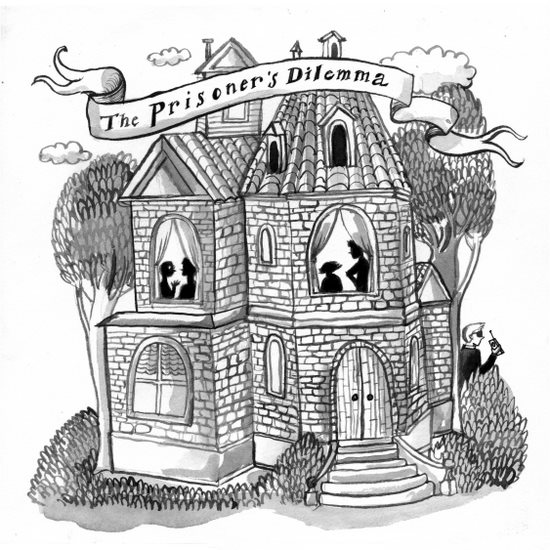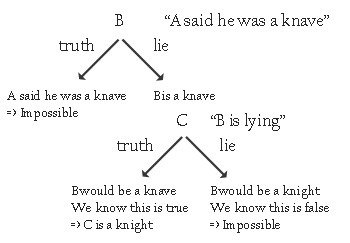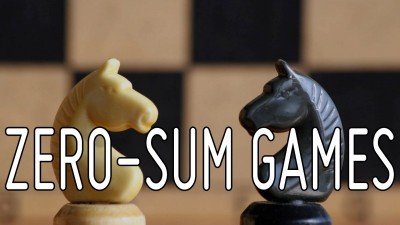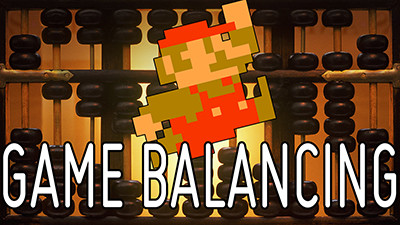Game Theory and You
 You probably heard of game theory at one point, nodded your head trying to convince the people around you that you knew what it was about, but like me, struggled to grasp its applications to actual game design.
You probably heard of game theory at one point, nodded your head trying to convince the people around you that you knew what it was about, but like me, struggled to grasp its applications to actual game design.
Game theory is a field of mathematics that studies the outcome of complex games, looking for points of equilibrium, value of different strategies through the payoff resulting from the different choices available. It must certainly be interesting on its own, but is most generally applied to concrete situations like politics, economics, sociology, competitive gaming and thermonuclear warfare.
I am not going to try my scholar impersonation and try to outdo proper definitions like wikipedia’s.You should probably read their article if you want a good introduction.
The immediate value of learning about game theory is to hear about the terms of zero-sum or non-zero-sum games, games with complete (like chess) or incomplete information (like Starcraft), the concept of decision tree and the different tools to model and analyze games as well as the famous prisoner’s dilemma. Not only this nomenclature will allow you to consider games in a more abstract fashion and to better categorize and analyze them, but it can also help you discuss them with fellow designers that would share the same knowledge.
Past this, I must admit that most of my efforts to dig deeper into game theory have left me with a feeling of lack of adequation to game design, probably because our craft is so young, or because my own understanding of it is too limited. The books I could lay my hands on weren’t really written with game design in mind and I couldn’t learn in a satisfactory fashion, but I know about ways to learn about game theory in a way that is relevant to game design, and that’s what I want to share with you today.
To me, game theory applied to game design is: The science of establishing optimal play in a complex game situation. In this perspective, it is more about understanding a player’s process when he is trying to make the best move. It impacts design in an indirect fashion, but it is still a way to inform it.
The key methods that game theory uses are based on the systematic listing of the different options and their respective payoff, in a matrix or in a tree, depending on the game itself. Way before I heard about game theory, I had used these methods in two contexts. The first was when trying to solve the logic riddles of Raymond Smullyan’s book “What is the title of this book?”. In it, the reader is taken through riddles about the inhabitants of a strange island, that are either knights and speak only the truth, or knaves that always lie. One of the very first problem goes as such:
According to this old problem, three of the inhabitants -A, B, and C- were standing together in a garden. A stranger passed by and asked A, “Are you a knight or a knave?” A answered, but rather indistinctly, so the stranger could not make out what he said. The stranger than asked B, What did A say?” B replied, “A said that he is a knave.” At this point the third man, C, said, “Don’t believe B; he is lying!”
The question is, what are B and C?
 So, let’s evaluate B’s statement, exploring the possibility that he would be right. Then that would mean that A would have said he was a knave, which is impossible as if he was lying, he would be a knight and would have lied, and if he was saying the truth and was thus a knight we would experience a paradox and all life as you know it would stop instantaneously and every molecule in your body would explode at the speed of light, which would be bad.
So, let’s evaluate B’s statement, exploring the possibility that he would be right. Then that would mean that A would have said he was a knave, which is impossible as if he was lying, he would be a knight and would have lied, and if he was saying the truth and was thus a knight we would experience a paradox and all life as you know it would stop instantaneously and every molecule in your body would explode at the speed of light, which would be bad.
We can then safely conclude that B is a liar, thus a knave.
The evaluation of C’s statement “Don’t believe B; he is lying” concludes of course that he is a knight.
Now you might say that this is not truely game theory, and you would probably be right, but the fact is that the logic and systematic approach are the same than those used in game theory and are adapted when evaluating a game position. It also relates to how game theory applies to player undestanding as we are trying here to find the solution to a problem, “win the game” as you could say, which segways into the other way to learn game theory related skills: Competitive gaming.

A competitive game, to me, is a debate. You argue your points with your opponent, and he argues his. “I think this series of moves is optimal,” you say, and he retorts, “Not when you take this into account.” Debates in real life are highly subjective, but in games we can be absolutely sure who the winner is.
Now trying to engage in competitive play yourself might be quite a daunting task, and actually quite unnecessary. Just like car engineers don’t need to be Formula One champions, actual high skill level in playing games is overrated when designing them. Instead, understanding how top players function and what attracts them to specific games will help you design games that have depth and can hold the test of time. Once again, designing games is informed only indirectly by the actual practice of games. That’s where Sirlin’s book can help you get an insight into competitive behavior. On a similar note, thanks to the recent development of e-sports and streaming sites, you can also find many web show about the different competitive games. Listening to their analysis really helped me understand the depth of these games. I would recommend the Day[9] daily as a first foray into competitive gaming.
There you go, I hope these pieces of advice motivated you to dig a bit into game theory!
Related links:
Other articles you might like:
Video: Zero-sum for game design
Article: Tips on game balancing
Game balancing is about establishing desired dynamics first, then tweaking numbers to make them emerge.
Article: Understanding gameplay - Part one: Definitions
An actionable definition of gameplay to help understand this complex term.





I like the “Back to the future” reference 🙂
Nice blog and interesting as always even if I think that competitive gaming has a bias to it if you want to learn from it….because then people ARE competitive and in lots of game it’s not always the case…you may want to win but maybe not in a very competitive way…taking back your F1 analogy…you also have lots of people making car for a day-to-day usage…and they can be pretty good at it too…both worlds can learn fro each other obviously and car industry did take lots of stuff from high-end F1 but is it like this that you can know what will make a guy buy a car ?
Thanks for the kind words, O. My point is that competitive gaming is a good way to learn about game theory because it is the analysis of optimal play at work. I just made the distinction that you don’t need to be a great player yourself to be a good designer, because that is a very common bias, but I guess my explanation is a bit confusing on its own. I am actually saying two things at once. 1 – You can learn about the mechanics of expert play only by watching them play. 2 – You need to learn about what the user likes and not become that user yourself (competitive or not). Oh, and that was from Ghostbusters!
damned of course you are right….Ghostbusters and not BTTF….shame on me !
Good luck with your whispers….